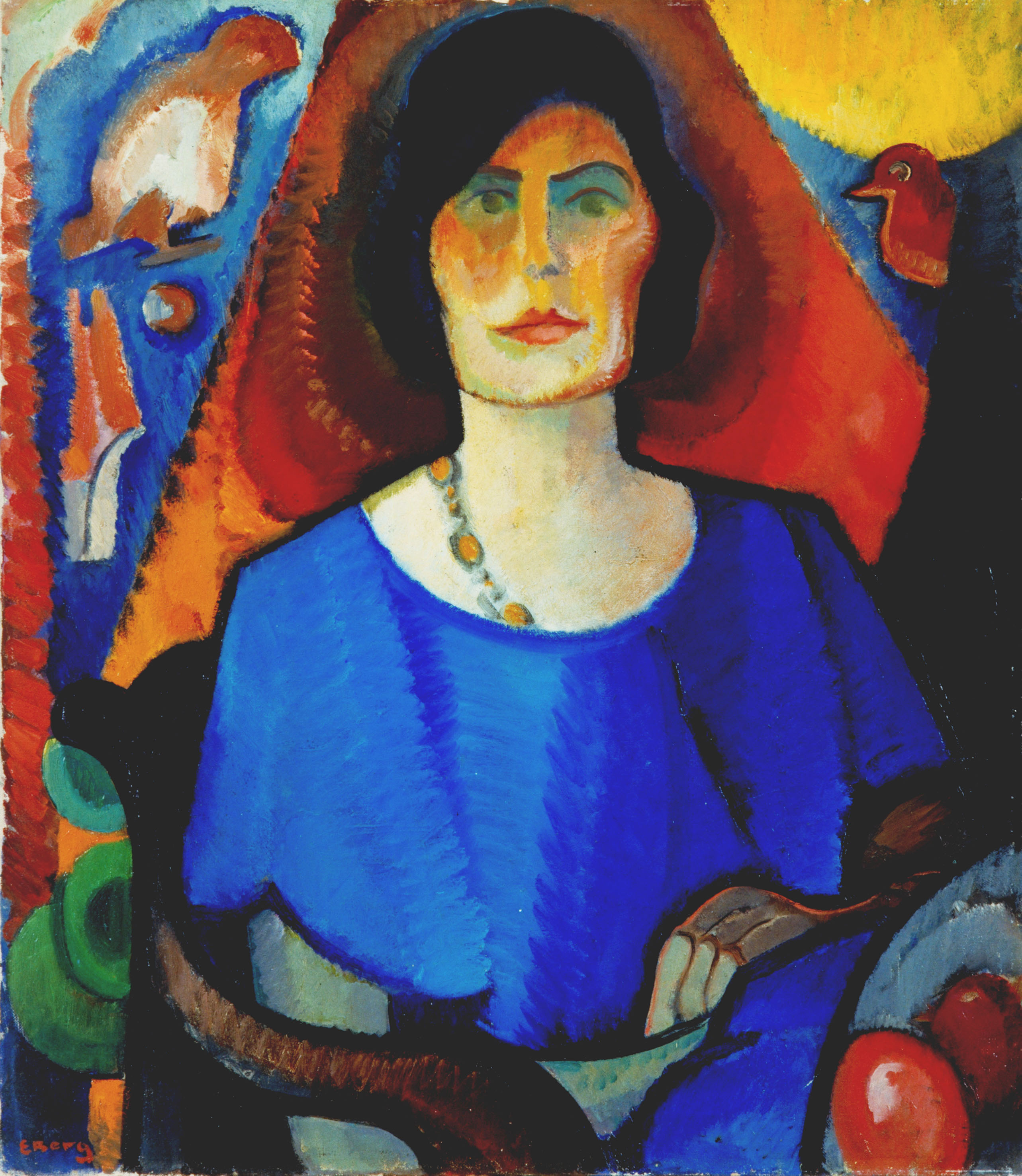This self-portrait from 1917 by Else Berg (1877-1942) is a wonderful synthesis of esoteric and theosophical influences. She channelled her sources of inspiration into dream images, fantasy figures, auras and feathery brush marks. Berg has depicted herself in a chair surrounded by birds, a red triangle and a sun. The composition may have been inspired by Piet Mondrian’s theosophical triptych Evolution, which represents man’s spiritual awakening in three stages. Berg has placed herself at the centre of her painting as a subject of spiritual awakening. The choice of a blue dress and the halo-like shadow around her head can be interpreted as references to the Virgin Mary, who was a recurring subject in her work in this period. Spiritual and religious motifs played an important role in Berg’s work between 1916 and 1920. This might be explained by international changes in response to the First World War, socialism and industrialisation.
The German Jewish artist Else Berg was born in Ratibor in Upper Silesia (now Racibórz in Poland). In 1909, she travelled together with her cousin and future husband, the Dutch Jewish painter Samuel (Mommie) Schwarz, to Paris to observe the latest developments in modern art. This brought about a great change in her work, which until then had been figurative and realistic. She now worked in a broad range of modernist styles, which she interpreted in her own personal way. In 1910, Berg and Schwarz settled definitively in Amsterdam and undertook many art trips through Europe. They eventually married in 1920 and remained together until their deaths in 1942. From the 1920s to the end of her career, the abstract and Surrealist tendencies of the Parisian modernists remained present in her work.
During the Second World War, the Nazis made it impossible for Jews to exhibit their works. As a precaution, at the beginning of the war, Berg and Schwarz hid many of their artworks with friends. They decided not to go into hiding and refused to wear the yellow star that Jews were forced to wear. On 12 November 1942, they were taken from their home and deported to Westerbork via the Hollandsche Schouwburg. Four days later, they were put on a train to Auschwitz, where they were murdered immediately upon their arrival on 19 November.
On 27 January 1945, Auschwitz, the largest Nazi concentration and death camp, where 1.1 million died was liberated by the Red Army. Today is International Holocaust Remembrance Day.


 Else Berg
Else Berg